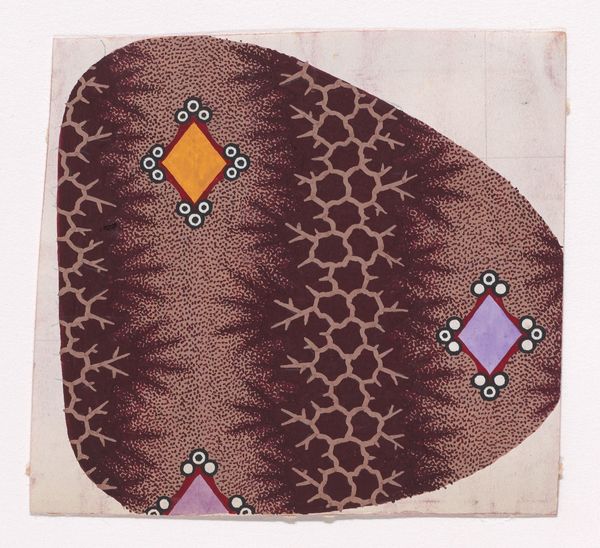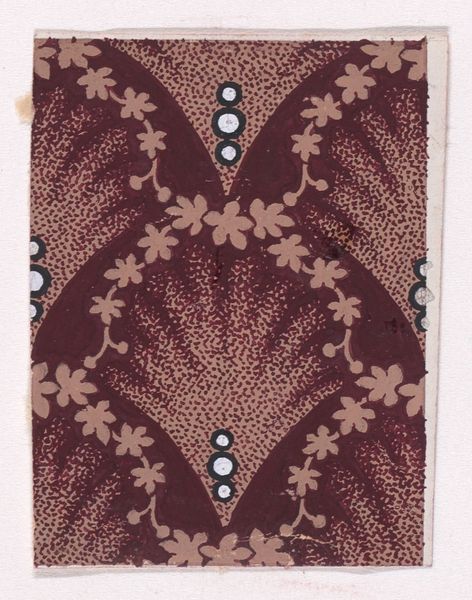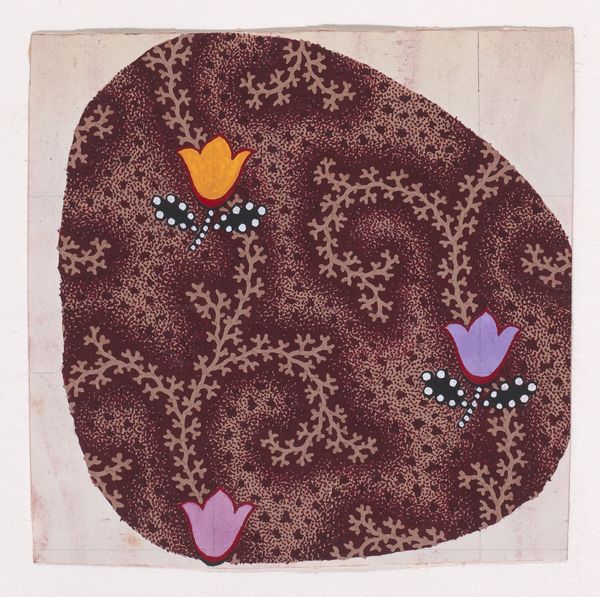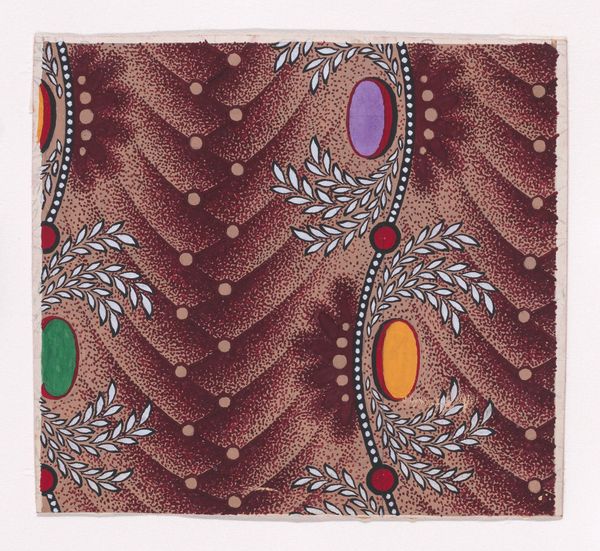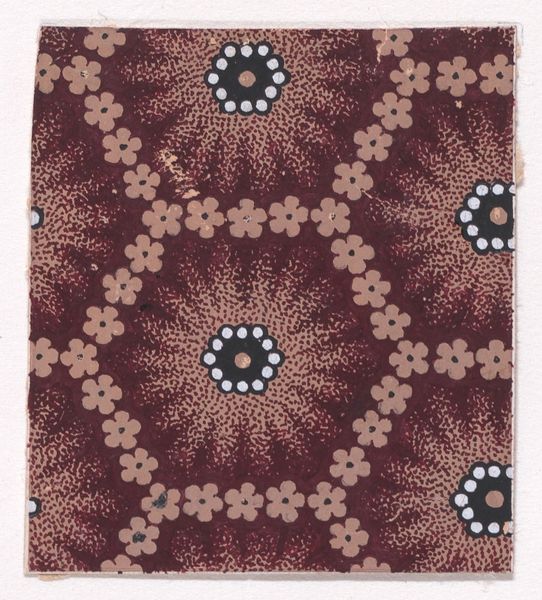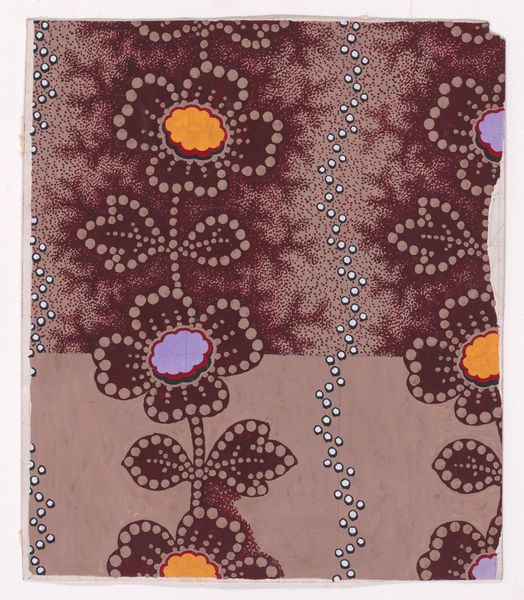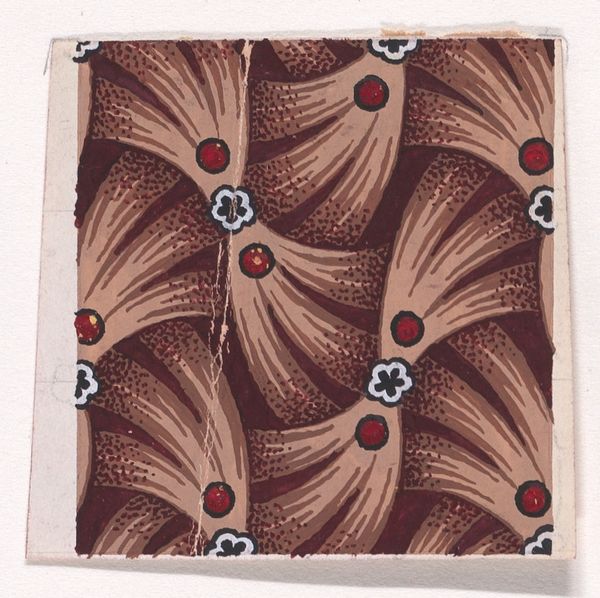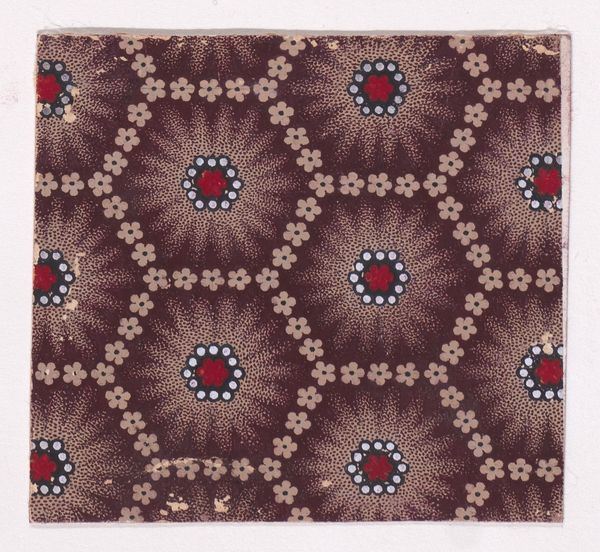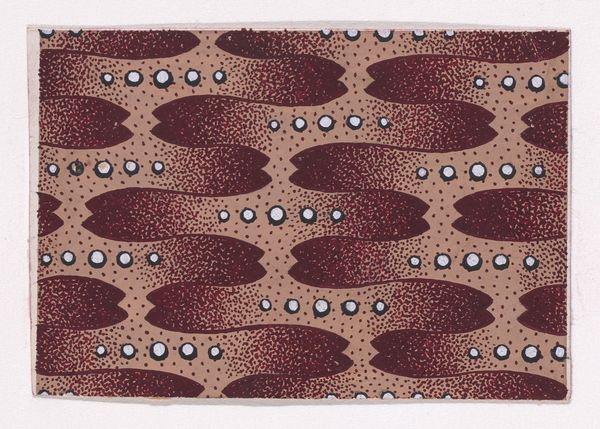
Textile Design of Alternating Vertical Rows of Stylized Flowers on Stems with Two Leaves Decorated with Pearls over a Stippled Background with Star-Like Shapes and Egg-Shapes 1840
0:00
0:00
drawing, print, textile
#
drawing
# print
#
textile
#
decorative-art
Dimensions: Sheet: 3 1/2 × 2 7/8 in. (8.9 × 7.3 cm)
Copyright: Public Domain
Editor: So, we’re looking at a textile design from 1840, made by an anonymous artist. It features alternating rows of stylized flowers. The pattern is quite charming, but I’m curious about its place in art history. What do you see in this piece? Curator: I see a deliberate act of production, one that collapses the supposed hierarchy between art and craft. The labor involved in creating this textile design, the materiality of the dyes and the printing process itself, is what interests me most. This wasn't conceived as 'high art', right? How would it circulate in society? What needs did it meet beyond pure aesthetic appreciation? Editor: That’s interesting. I hadn't really considered it in terms of labor. Were textiles typically considered 'craft' rather than 'art' at the time? Curator: Precisely. Think about the means of production: was this hand-printed or made using early industrial methods? That would drastically alter our understanding of the work. Also, who was producing this piece? Where? Consider where it would eventually be consumed: in whose home would these floral patterns appear? What class of people used such a product? All these things influence the cultural valuation and our understanding of what it means to be decorative in art. Editor: So, you're saying that the social and economic context surrounding the creation of this piece is just as important as the aesthetic qualities of the design? Curator: Absolutely. It forces us to question what we consider worthy of being called 'art'. The materials and process of making the flowers share just as much to its meaning, to who had the power to produce things and for what purpose. Editor: I see what you mean. I hadn't considered the social and labor implications inherent in this design. I now know what other questions to ask about design in relation to material.
Comments
No comments
Be the first to comment and join the conversation on the ultimate creative platform.
